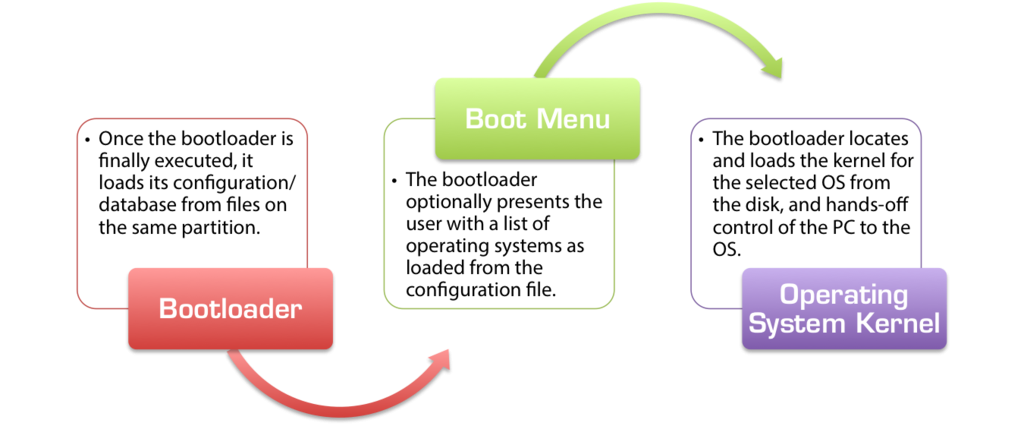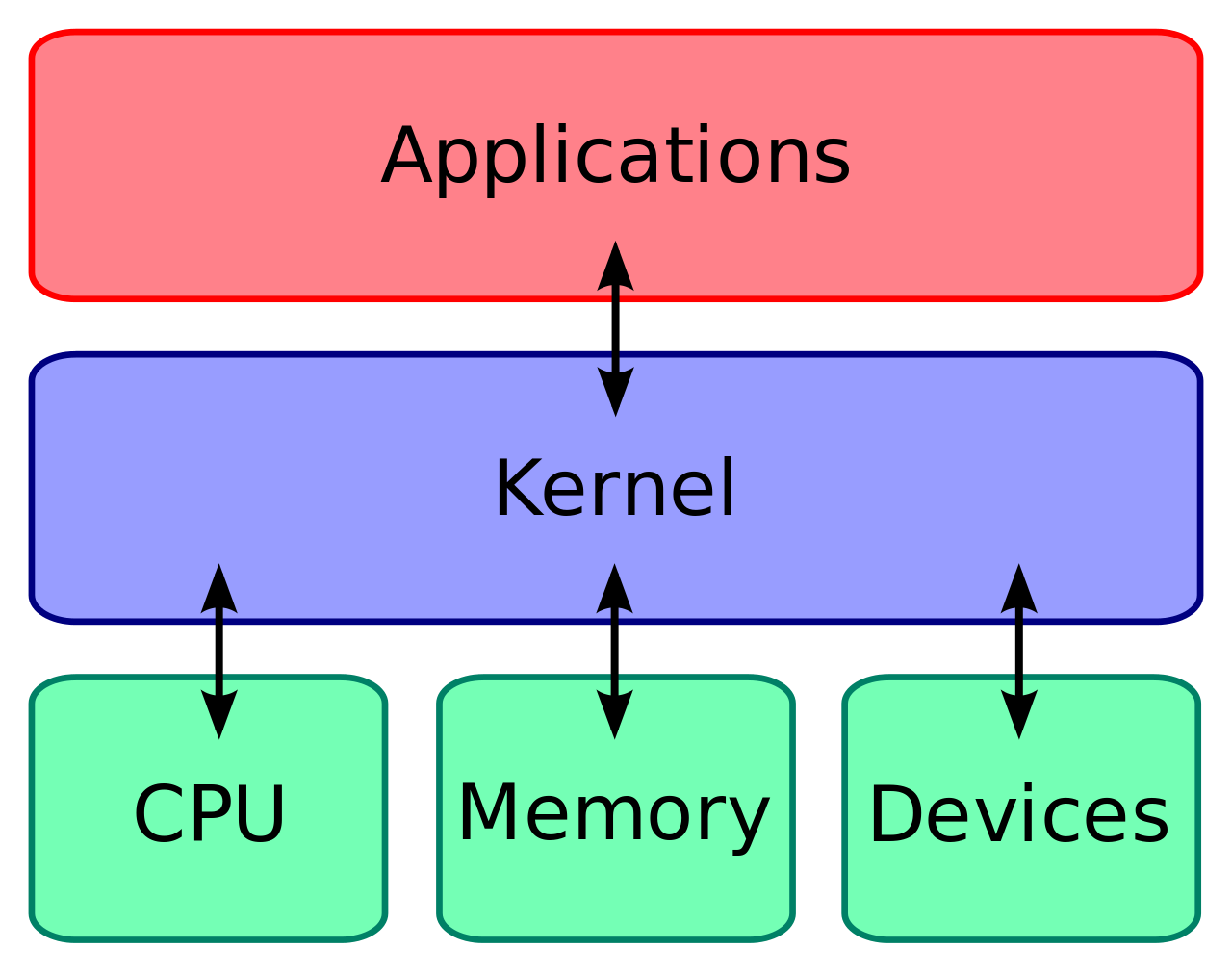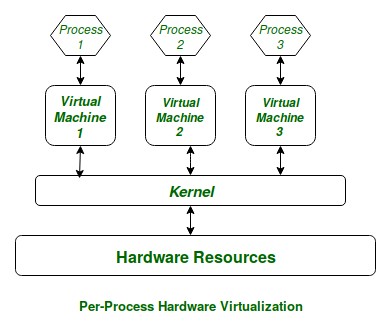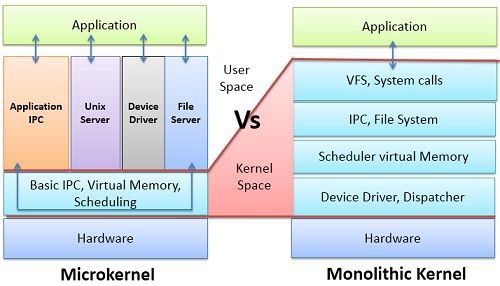List of content you will read in this article:
Linux is one of the stable operating systems capable of handling complex applications and is suitable for creating complex architectures. Linux has a kernel that is known as the core of the Linux operating system that has complete control over everything within the Linux system. The kernel is considered to be one of the first programs that will get loaded on the Linux system just before the boot loader loads up. If you are new to Linux and do not know about boot loader, then it is a type of program that will load and start load time processes of the Linux operating system. It helps load the OS within the computer's memory whenever you start the system or boot up the system.
If you have a basic computer background, you must be familiar with the term "booting up" the system. It is the step where the bootloader will translate the instruction for processing the data for the CPU. The bootloader is capable of handling the memory and other peripherals like keyboards, monitors, and others.

Working of a Kernel

Demystifying the Linux Kernel from the Digilent blog was retrieved on the 27th of September.
As per the above image, a kernel acts as a barrier between the applications running on the system, CPU, memory, and connected devices to the system. It is said as the interface between the hardware of the computer and the running processes or applications. The Linux kernel is available free and open-source, and Unix-like operating system kernel.
- The hardware or the physical machine that creates the base of the Linux system consists of memory (RAM), the processor or central processing unit (CPU), along with the input/output (I/O) devices like storage, networking, and graphics. The CPU will carry out the desired computations, read the data and write the data to memory.
- The Linux kernel is also known as the core program of the Linux OS. The main software resides within the system's memory and guides the CPU in what task to do.
- User processes are the running programs that are managed by the system kernel. User processes create the main userspace. The kernel lets these processes establish a connection with each other.
The system will run various tasks on the CPU either in the kernel-mode or the user mode. The code that runs in the kernel-mode is restricted to using the hardware, while code that runs in the user mode is restricted to use CPU and memory. This type of distinction also works in the same way for memory.
Subsystems of Linux Kernel
We have mentioned below the main core subsystems of the Linux kernel. These are- process scheduler, virtual file system, memory management unit, networking unit, and inter-process communication unit.

In this article, we will be focusing only on the three major subsystems of the Linux kernel in detail. Let's see the detailed functioning of these three core subsystems.
- The Process Scheduler
This is the primary subsystem of the kernel as it is responsible for distributing the CPU time and resources among all the processes or applications in a fairway. There will be no shortage of CPU resources for any of the running processes and allow several applications to run simultaneously without impacting the performance of one application due to another application.
PS: Check out recommendations for the best server CPU processors for 2022.
- The Memory Management Unit
This kernel subsystem is responsible for managing the memory and ensuring the proper distribution of the memory among all the resources, processes, and applications running on the system, so they do not crash because of insufficient memory or throwing errors in kernel mode like "insufficient memory".
- The Virtual File System
This is the kernel subsystem that is responsible for providing an equal interface to all the filesystems available on the computer and allowing them to access the stored data present on those file systems.
Advantages of Linux kernel
Below are some advantages of working with the Linux kernel.
- As there is less involvement of the software, it is considered to work faster.
- The kernel is a small piece of software; thus, it is smaller in terms of source and compiled forms.
- Due to its small size and code, it tends to have fewer bugs that are less chance of any security-related problems.
- It is a single process that runs entirely within a single address space.
- It helps manage all the resources of the system among all the processes running on the Linux system.
Disadvantages of Kernel
Below are some pitfalls of the kernel; some of them are mentioned below.
- As there are dependencies between the kernel subsystems, it might lead to the entire system crash if there is a bug in the device driver.
- If the kernel's size is large, it becomes difficult to manage it.
- In order to add any new service to the Linux system, you need to modify the operating system as a whole.
Monolithic kernel
Most of the work done in the monolithic kernel is via system calls. The running programs interact with the OS via system calls. Whenever a program wants to interact with the OS kernel, it needs to make a system call request. System calls will provide the services of the OS to the requested applications using the Application program interface (API).
How monolithic kernel is different from a microkernel
The significant difference between the two is based on the system calls and the kernel space.

We have mentioned some of the significant differences between monolithic and microkernel. The main distinction is that the microkernel implements the user and kernel services in separate spaces. In contrast, the monolithic kernel employs both services in the single address space.
- The size of the microkernel is small as the kernel-related services and tasks will run only the kernel services. In contrast, the monolithic kernel's size is large compared to the microkernel as monolithic runs both kernel and user services in the same address space.
- The processing of the monolithic kernel is fast as the system calls are used to establish the communication between the applications and the underlying hardware. While the microkernel processing is slow compared to the monolithic kernel, the communication is done using the messages that are being passed between the running applications and the underlying hardware.
- If you want to add any new service, you can easily extend the microkernel as the service will get added to the user address space completely isolated from the kernel space. Thus there is no need to modify the kernel. While on the other hand, the extending monolithic kernel is difficult as adding any new service will require you to alter the entire kernel space.
- From the security perspective, the microkernel is more secure as if any of the running services fail, there will be no impact on the operating system. While on the other hand, monolithic is less safe as the complete monolithic system will get affected if there is any service failure.
- While designing the kernel, the monolithic kernel is easy to design as it will require less code, while on the other hand, the microkernel is complex to design as it will need lengthy codes that might lead to more bugs.
What is kernel space?
The Linux system can divide the memory space into two regions- kernel space and userspace. Kernel space is the kernel's separate space executing various tasks and providing its services to the system.
Conclusion
The kernel is the major part of the operating system that has made it possible to run various processes simultaneously and does not end up crashing the system due to insufficient resources to run. It helps in managing the working of every process and helps them interact with the underlying hardware. The kernel is of two types- monolithic and microkernel.
Today various companies are leveraging the combined benefits of both the kernels for optimum performance and productivity of the system.

I'm fascinated by the IT world and how the 1's and 0's work. While I venture into the world of Technology, I try to share what I know in the simplest way with you. Not a fan of coffee, a travel addict, and a self-accredited 'master chef'.